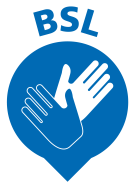Helping patients and emergency personnel when there’s a major incident
When a major incident occurs, we attend to the immediate clinical needs of patients and emergency personnel on the scene.
Hazardous Area Response Team
Our Hazardous Area Response Team (HART) is made up of specially trained paramedics who are trained and equipped to provide the ambulance response to major incidents, such as building collapses, train crashes and large-scale motorway accidents, or incidents involving hazardous materials.
They work alongside police and fire and rescue services within the ‘inner cordon’ or ‘hot zone’ of the major incident, and their job is to help save lives by triaging and treating casualties. They are also there to look after other emergency personnel who can become injured themselves when attending such challenging emergencies.
Special Operations Response Team (SORT)
SORT is made up of existing frontline paramedics and emergency responders who have volunteered to complete additional training in major incident response, in particular response to Chemical, Biological, Radiological and Nuclear (CBRN) or Hazardous Materials as well as Marauding Terrorist Attacks (MTA).
They receive six days specialist training every year to prepare them for their role in supporting complex emergencies, and they train and respond alongside HART.
Emergency Preparedness, Resilience and Response Team (EPRR team)
OUR EPRR team is responsible for all emergency preparedness, resilience and response across the North East. They deal with all internal and external emergency planning relating to major incidents and provide specialist advice to our command team.
Their responsibilities include:
- Writing and testing internal and external emergency plans, policies and procedures.
- Working with external organisations, such as police, fire and rescue, local authority and military to support joined up working.
- Providing command and control training for all NEAS commanders.
- Providing specialist advice around complex incidents.
